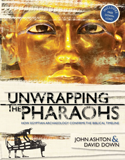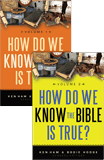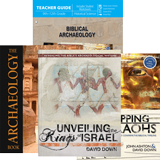Feedback: Does Archaeology Prove the Bible Is Right About Camels?
Responding to a news story that we covered in The Bible Wins the Debate with Carbon-Dated Camel Bones, a reader offers constructive feedback and suggestions as to how we covered the topic.
This is a very poor attempt to help answer the questions raised in the article.
Carbon dating is irrelevant.
Slinging off at those “evil liberals” who don’t believe the Bible is irrelevant.
Why didn’t you use archaeology to answer the question?
Why didn’t you mention that writings from ancient Ugarit (1900-1600 BC) mention camels?
Why didn’t you mention that Randall Younker discovered a gold camel figurine in a kneeling position from Ur (2070-1960BC), the very region and roughly the same time period that Abraham came from.
Or the petroglyph at Aswan form 2400-2200BC of a man leading a camel.
Or the figure from Aabussier el Melek, Egypt, dating to the 3rd millennium BC and another from Syria in the 2nd millennium BC.
Simply going on about “carbon dating”, and “liberals who don't believe the Bible”, or even the “inspiration of Scripture”, rather than using historical evidence that shows that this most recent claim is wrong - is narrow minded.
In this instance, the archaeology confirms the Biblical usage of camels and disproves the claims made in the media.
Thanks so much for thoughtfully reading our web articles and sharing your feedback with us. The issue of whether camel bones are the straw that breaks the Bible’s back continues to attract attention and inquiries from our readers. The apologetics approach you suggest in your letter, in my experience, follows a pattern that is effective in removing stumbling blocks to faith for some people but not for most. I’d like to take this opportunity to discuss the principles involved as well as the reasons I chose to defend Scripture as I did in “The Bible Wins the Debate with Carbon-Dated Camel Bones.”
Relevance of the Topics Addressed in News to Know
They saw the research as “direct proof” of their position that the Old Testament is not a reliable historical document.
First of all, it was essential in News to Know to address both the carbon-dating issue raised by the researchers and the anti-biblical position of the American Friends of Tel Aviv University (AFTAU). The articles in the media were drawn largely from the press release issued by the AFTAU. The press release indicated that the AFTAU saw the research as “direct proof”1 of their position that the Old Testament is not a reliable historical document. The worldview of those making this charge is relevant and must be pointed out to the public. As my mother always advised, “Consider the source.” People often read only the headlines and need to be informed about the biases of those who generate them.
In addition, though the AFTAU was the source of the greatest and by far the most hostile assault on the role of camels among the patriarchs (Abraham, etc.), the researchers themselves, writing in the journal Tel Aviv, used the precision of carbon dating to make a case against the historical accuracy of the biblical record concerning King David and King Solomon. Evidence about the unobservable past is interpreted through the lens of what a person believes about the past and about the trustworthiness of historical records related to it. Thus, though less hostile, the claims made by the researchers themselves are affected by their bias. Most people will not search out and read the original research, so it is my duty to inform them of relevant biases affecting the interpretations that eventually filter into the news.
In addition to dealing with the worldview of those involved, it is essential to deal with the evidence they present. Regardless of what additional evidence “our side” might have concerning an issue, in addition to addressing the starting points through which evidence is viewed, we must grapple with their “evidence” itself. Those who are unsteady in their starting points or weak in the faith are easily made to stumble by the illusion of powerful evidence. Insufficient facts about the real nature of their “evidence” can make it seem incontrovertible. Therefore, we cannot remove the stumbling blocks of “the other side’s evidence” by simply listing ours. We must explain the problems with their seemingly impressive evidence—in this case, carbon-dating of Middle Eastern artifacts.
Precision versus Accuracy
Many in the modern world have a love affair with numbers. Anything mathematical gives the illusion of ultimate reliability because numbers should never lie. Yet most people do not understand the difference between precision and accuracy. A scientific measurement may be extremely precise—like this case in which the researchers claimed precision to within a few decades. They based their contention that the Bible is wrong in its history of David and Solomon on the precision of their dates.
Extremely precise numbers, however, no matter how carefully they are measured and calculated, are not necessarily accurate. Accuracy involves how close to the truth the numbers are. If the calibration for any scientific measurement is off, then the result, no matter how precise, will be inaccurate. In this case, the inherent weakness of the carbon dating involves the calibration.
Explaining the source of the carbon-dating calibration problem required dealing with the seemingly tangential issue of Egyptian history and the inaccurate dates afflicting the Egyptian timelines. (Interestingly, the common misunderstanding of the Egyptian timeline afflicted Bill Nye, as evidenced by his statements in the recent Nye-Ham debate. We have included an article addressing his contentions in our debate answers page.) Having shown at least one reason in the News to Know article why the carbon-dates for this time and place cannot be trusted, I then cleared the floor to deal with other relevant evidence in the space available.
The Place of Camels
You suggest many interesting archaeological discoveries.
Naturally I am interested in how archaeological discoveries illuminate and affirm Scripture. Some of my favorite publications deal with such discoveries. There are several caveats worth mentioning here, however. Some of the examples you mention aren’t directly related to the issues raised by the researchers, the AFTAU, and the media. The issue they raised was not the existence or presence of camels in the ancient Middle East but rather the camel’s role as a domesticated and practical animal of critical economic importance, especially as applicable to “Bible people.” The researchers themselves did mention some of the discoveries you cited in their original journal article, but they considered the camels of art and artifacts to be either representations of wild camels or to be of questionable provenance and dates.
Interestingly, an expert in Semitic languages, Dr. K. Martin Heide of Philipps University Marburg, as reported in the Tyndale House News, agrees that the Genesis accounts do not declare the camel to have been an animal exploited for its economic value in the time of the patriarchs. Dr. Heide says the following:
Absence of evidence (of camel bones) is not evidence of absence (of the camel) in Israel in the 2nd millennium. Proving that something did not exist at some time and place in the past can only be done on certain premises because proof of its existence may be unearthed at some future date. The Genesis narrator does not claim that the camel was in wide use in the 2nd millennium BC. To the contrary, while Abraham and Jacob had camels (probably Bactrian, or double-humped, camels that were available in Mesopotamia), Isaac, who stayed in Canaan most of his time, seems to have used no camels. In addition, the final retreat of Jacob with his family to Egypt was all done on donkeys. All this points to a more complex history of the use of pack animals in the 2nd millennium BC. Neither do we have to assume that they (some families only!) or the few people who may have used camels at that time buried their camels or deposited their bones at some special place for them to be found in our times. Only later, in the first millennium BC, when camels came to be exploited in the well- organized infrastructure of an established kingdom, can we expect to find archaeological footprints of their use.
Proofs Carved in Stone
Of the artifacts you mention, those that do directly pertain to the people and places involved illustrate a common problem with such “proofs carved in stone” (or in brass or pottery). Like fossils, artifacts do not often come with dates stamped on them. Even those that do are often suspect given the tendency of some ancient rulers and cultures to mythologize or exaggerate their history. Therefore the interpretation and weight accorded to an artifact requires some sort of corroborating historical record, and a reliable one at that. For example, if we find pottery shards, bits of uniform regalia, and armaments from ancient Roman battlefields in Europe or Britain, and if we have a written record from a Roman historian documenting the actions of the Roman army in that place, we can get some sort of handle on the age and identity of those materials. But our conclusions are only as reliable as the Roman historian who wrote the record and those who copied it over through time.
While most accept the records written by ancient Romans and many other ancients, there is a pervasive tendency among liberal scholars to distrust the writings contained in the Bible. This distrust persists despite the internal consistency of God’s Word and its affirmation by external evidence.
The archaeological evidence you mention must be “dated” in accordance with historical documents. Such documents include, once again, ancient Egyptian records that have suffered from a traditional timeline disastrously inconsistent with documentation discovered later in the ruins of other Middle Eastern cultures. The dates assigned to the artifacts are only as reliable as the dates obtained from the historical records on which they are based. Thus, when we present people with our “proof texts” in stone, we are showing them proofs as vulnerable to dating problems as the carbon dates and as the many dates in Egyptian chronology. Certainly we would not want to just offer the artifacts with dates we like and ignore those with dates that don’t fit the point we wish to make.
Archaeological finds are a wonderful way to enlighten our understanding of ancient history. They often answer puzzling mysteries that only make sense as we find shards to fill in the blanks in our understanding of ancient cultures and events. They do often help get events in the right order and even pin down the absolute dates for some. They frequently do affirm what we read in the Bible, just as, analogously, much of the fossil record is best understood through the lens of biblical Flood history. But the ultimate arguments in situations like these are a matter of starting points. A person’s worldview, his or her starting point, determines the dates he or she is willing to accept.
Evidence, Worldview, and Apologetics
I admire your zeal in defending Scripture and your familiarity with archaeology of the era. And I am glad you are using that information to remove stumbling blocks from the paths of those you know. But I do suggest that we must always address the actual issues raised by the opposition even if we have a tally of competing evidence to present.
Above all, we should remain mindful that, while evidence must be addressed, the battle is ultimately not about the evidence but about the presuppositions a person holds regarding God and His Word—presuppositions that affect everyone’s observation and interpretation of the evidence. Remember, Jesus warned in a parable that some would not believe God’s truth even if they saw “one rise from the dead” (Luke 16:31, NKJV). Jesus certainly did that, showing Himself alive to hundreds of witnesses for forty days by many infallible proofs (Acts 1:3, NKJV) and proving Himself to be the Son of God (Romans 1:4, NKJV), yet many reject Him still.
Our blessings to all our readers who continually study God’s Word (2 Timothy 2:15, NKJV) and prepare to give answers for the hope that we have in Christ (1 Peter 3:15, NKJV), answers that begin with the authority of God’s Word from the very first verse and point to Jesus Christ as the “Word made flesh” (John 1:1–3, 14; NKJV) to bring us salvation.
Footnotes
- The AFTAU press release, for instance, states, “In addition to challenging the Bible’s historicity, this anachronism is direct proof that the text was compiled well after the events it describes.” It also states that the findings “further emphasize the disagreements between Biblical texts and verifiable history, and define a turning point in Israel’s engagements with the rest of the world.”
Recommended Resources

Answers in Genesis is an apologetics ministry, dedicated to helping Christians defend their faith and proclaim the good news of Jesus Christ.
- Customer Service 800.778.3390
- © 2024 Answers in Genesis




